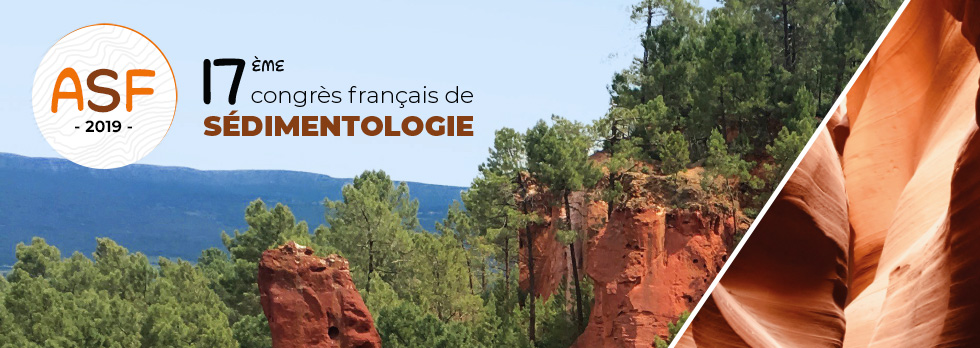
|
|
|
Conférenciers invités
Simon LANGProfessor of Petroleum Geoscience Director of Centre for Energy Geoscience School of Earth Sciences University of Western Australia, Perth
Professor Simon Lang is a sedimentologist/stratigrapher with global experience including regional geological mapping, sedimentology/stratigraphy research, and petroleum exploration & development. He worked at the Geological Survey of Queensland (1979-92), then Lecturer at Queensland University of Technology and Associate Professor at the University of Adelaide (1992-2005). He was manager of Stratigraphy/Reservoir Analysis for Woodside (2005-13), then Senior Stratigrapher with the Seismic Geomorphology & Clastic Stratigraphy teams for Chevron Energy Technology Company (Houston), and Geologic Services Manager & Stratigraphy Advisor (Perth) for Chevron Australia (2013-18). He joined University of Western Australia as Professor of Petroleum Geoscience, and Director of the Centre for Energy Geoscience, leading industry-funded research consortia on seismic stratigraphy and reservoir analogues. He has published extensively, supervised numerous graduate students, led industry-oriented training courses and research consortia, and run numerous field courses & core workshops. He was PESA Distinguished Lecturer (2010), and a member of PESA, AAPG and SEPM.
KEYNOTE : Sequence Stratigraphy, Seismic Geomorphology and Depositional Analogues for Hydrocarbon Exploration and Reservoir CharacterizationHydrocarbon exploration and field development has been revolutionized by advanced acquisition and processing of regional scale 3D seismic datasets. Seismic and sequence stratigraphic concepts have advanced as predicted facies architecture in 3D were tested by drilling. New tools and techniques for visualizing 3D seismic data led to high resolution imaging of seismic attributes that highlight geomorphic patterns indicative of specific geologic facies distribution and geometries within single reflections, opening up the field of seismic geomorphology. Critical to interpreting the plan-view seismic patterns and associated stratigraphic relationships are the judicious deployment of appropriate analogues. This includes measurements of modern depositional systems and elements, outcrops and producing field analogues for quantitative data on preserved reservoir geometries and thickness ranges especially at the sub-seismic scale. Quantitative sequence stratigraphy and biostratigraphy have also evolved to improve prediction of key surfaces (sequence boundaries, flooding surfaces) and depositional systems tracts in wells, cores, and outcrops, providing a means to sense-check seismic interpretations, increasing resolution from 3rd order (~1Ma) to 4th order (~100Ka) temporal scales. Integrating these datasets can provide a powerful predictive and explanatory toolset for exploration and appraisal, and especially for field-scale reservoir characterization, underpinning improved reservoir models for development and production planning.
Phil Thurston Adjunct Professor Harquail School of Earth Sciences Laurentian University Sudbury ON, Canada Phil Thurston is a stratigrapher and geochemist who specializes in Archean greenstone belts. As such, he uses sedimentology, volcanology and geochemistry to decipher the origin of the patterns of greenstone belt stratigraphy. He worked at the Ontario Geological Survey (1967-2000) and subsequently has been an Adjunct Professor at Laurentian University in Sudbury Ontario, Canada. At the OGS he did helicopter supported reconnaissance of large regions of Northwestern Ontario (as much as 80,000 km2/year, followed by more detailed greenstone belt mapping in regions ranging in age from 3 Ga to 2.7 Ga. He discovered the unique geochemistry of F III rhyolites and their association with VMS deposits in Archean greenstones. He designed and scientifically edited a major monograph entitled “The Geology of Ontario” comprising two volumes and 8 map sets. Geological tourism has taken him to the Slave Province of Canada, the Archean of South Africa, Zimbabwe, Tanzania, Australia, Finland and Russia. He was one of the 4 man team which wrote the proposal resulting in the $104 M Metal Earth project.
KEYNOTE : Greenstone belt stratigraphy, Geochronological and geochemical support Greenstone belts are largely volcanic terranes with individual mafic/ultramafic basal units succeeded by minor volumes of felsic volcanic rocks and metasedimentary units. Given the fact that the volcanic units are relatively insensitive indicators of depositional setting, the primary textures and structures of the metasedimentary units are essential of understanding the depositional setting of greenstones. Modeling has shown that the chemical sediments (BIF, chert, graphitic argillites) represent slow deposition below storm wave base. Sedimentary subprovinces and successor basins represent syn-tectonic sedimentation in part related to major tectonic boundaries. |



